In this article:
What Is Direct Vision Standard and FORS Accreditation?
Assured Systems offer an extended range of Direct Vision Standard and FORS Accreditation compliant products. Learn about what they are and what they mean to you.
Direct Vision Standard and FORS Accreditation
In this article we will learn what the direct vision standard and FORS accreditation are, what they mean to you and how to promote best practise as commercial vehicle operators. What are the differences? What do you need to do? What are the benefits and why do these schemes exist? We will answer all these questions and more.
The Direct Vision standard is exactly that a standard. It is something that operators of HGV vehicles need to adhere to or face penalty.
FORS Accreditation is a voluntary scheme that shows you promote best practices in fleet operation. This includes safety, efficiency and security. By joining the scheme, you must prove that your vehicles are compliant in a tiered award structure, bronze, silver and gold. To reach the higher levels of accreditation you must not only show that your vehicles have the necessary cameras, sensors and displays but that you actively promote safety, good practise and have upmost intentions of ensuring everybody is safe including other road users and that your fleet is trackable and efficient.
What is the Direct Vision Standard?
The Direct Vision Standard or DVS was launched by the Mayor of London in 2016 for HGV’s. Its sole aim is to increase safety for all road users including pedestrians, cyclists and other drivers.
It measures how much a HGV driver can see directly through the windows of the cab. This indicates the level of risk to other road users particularly people walking, cyclists, motor cycles and other vehicles.
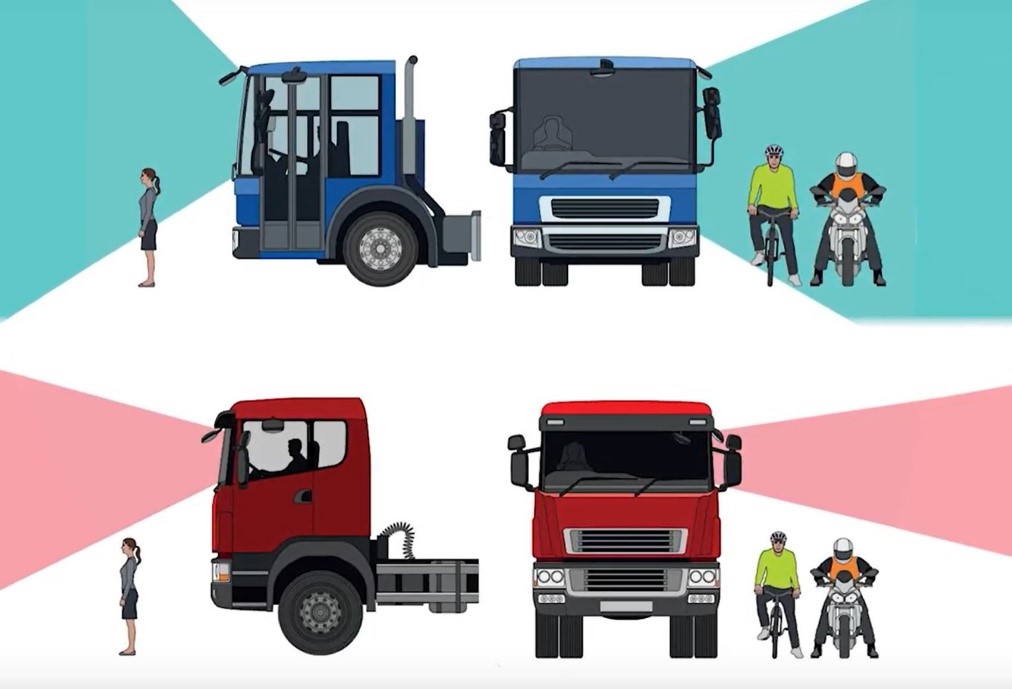
Source TFGL
In congested and busy urban areas danger to those groups is astounding as the below statistics suggest:
- 33% of all traffic in London is made up of freight at peak times
- 4% of London’s traffic is HGV’s but they account for a disproportionate amount of fatal collisions
- HGV’s were involved in 63% of fatal collisions with cyclists and 25% with pedestrians
- 4000 people were killed or fatally injured in accidents in 2017 for example
- In the time it take to scan 4 mirrors at 5mph a vehicle can travel 16 meters
- Vehicle safety devices such as cameras and sensors are 50% more effective in reducing fatalities and injuries than modifying truck design. Furthermore, active safety measures will draw the attention of the driver to the safety critical area or the vulnerable road users concerned.
The Direct Vision Standard only affects HGV’s with a maximum authorised mass or gross vehicle weight of more than 12 tonnes. It does not effect cars, vans, small rigid vehicles, busses, coaches or pick up trucks.
When Does the Scheme Go Live?
From 26 October 2020, all HGVs over 12 tonnes entering and operating in Greater London will need to hold a Safety Permit if their vehicle falls short of the Direct Vision Standard star ratings.
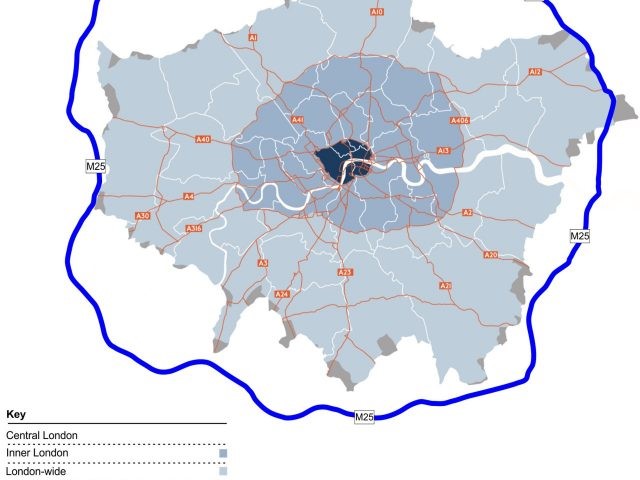
Source TFGL
How will you be scored?
As a fleet operator you will need to understand what your current vehicle safety score is. This is based on a 0 to 5 star rating. You can do this by going to: https://tfl.gov.uk/modes/driving/dvs-safety-permit-application/
If your vehicle has 0 stars then there are other areas of improvement that can be made retrospectively to achieve a rating and get your permit. Permits are free of charge and you will need to have one by the 26th of October 2020, it can take 28 days so please bare this in mind.
Safety Permits will be electronic and enforced by Automatic Number Plate Recognition cameras, and non-compliant HGVs will be issued with a Penalty Charge Notice of £550 per day, which will be reduced by 50 per cent if paid within 14 days.
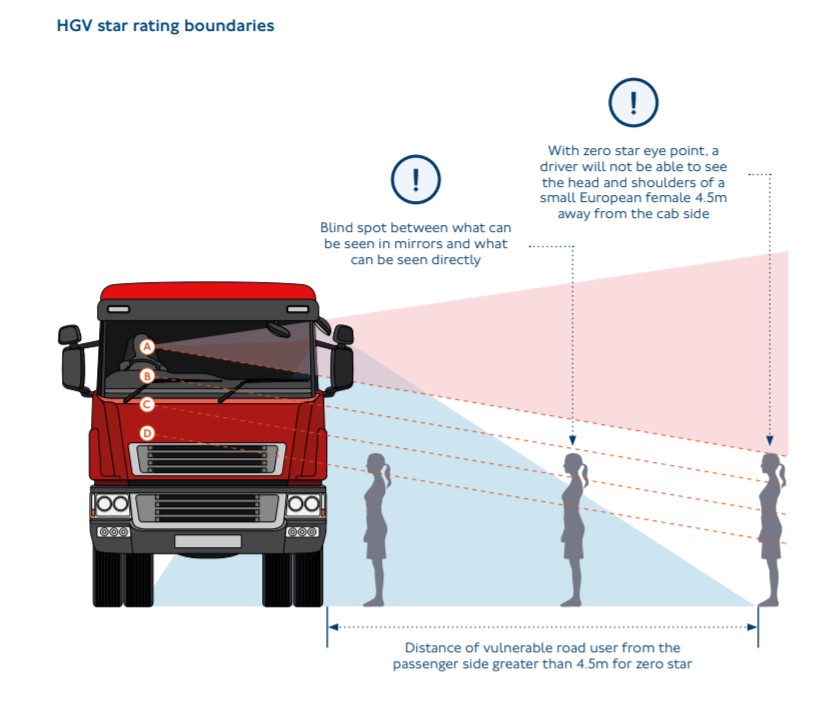
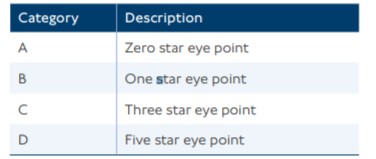
What do the Star Ratings Mean?

If the vehicle’s star rating is one star or more then you don’t have to worry. You must still apply for a Safety Permit via the tfl.gov.uk website and an electronic Safety Permit will be issued. If a vehicle has a 0-star rating, they will have to fit additional safety equipment before applying for the Safety Permit. The requirements for 0 star rated vehicles are as follows:
- Class V mirror to be fitted to the nearside of the vehicle (offside of vehicle if left hand drive)
- Class VI mirror to be fitted to the front of the vehicle
- Side under run bars to be fitted to both sides of the vehicle (although there are some exemptions to this requirement)
- Stickers and marking should be fitted around the vehicle to warn vulnerable road users of the hazards and dangers around the vehicle
- A sensor system should be fitted to the nearside of the vehicle to warn the driver of the presence of vulnerable road users (this system should be fitted to the offside for left hand drive vehicles)
- An audible warning system that informs vulnerable road users when the vehicle is turning left
- A camera system should be fitted to allow for the monitoring of activity on the nearside of the vehicle (for left hand drive vehicles this camera system should be monitoring activity on the offside of the vehicle).
When a zero-star rated vehicle has been fitted with the additional safety equipment, you should then apply for a Safety Permit (https://tfl.gov.uk/info-for/deliveries-in-london/ delivering-safely/direct-vision-in-heavy-goods-vehicles). In this case the application must also include two photographs of the Safe System equipment that has been fitted. Each application will be reviewed and accepted or rejected accordingly.
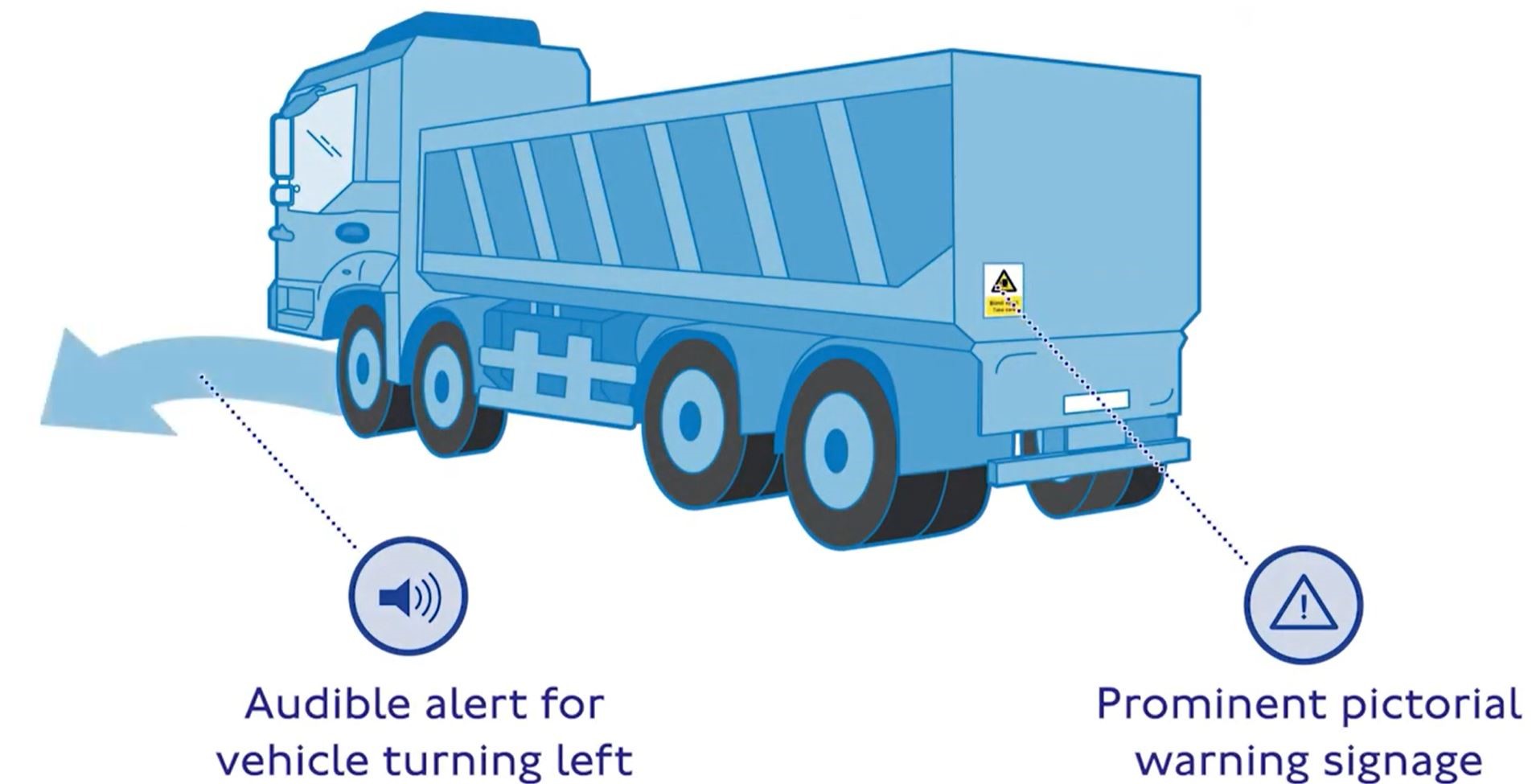
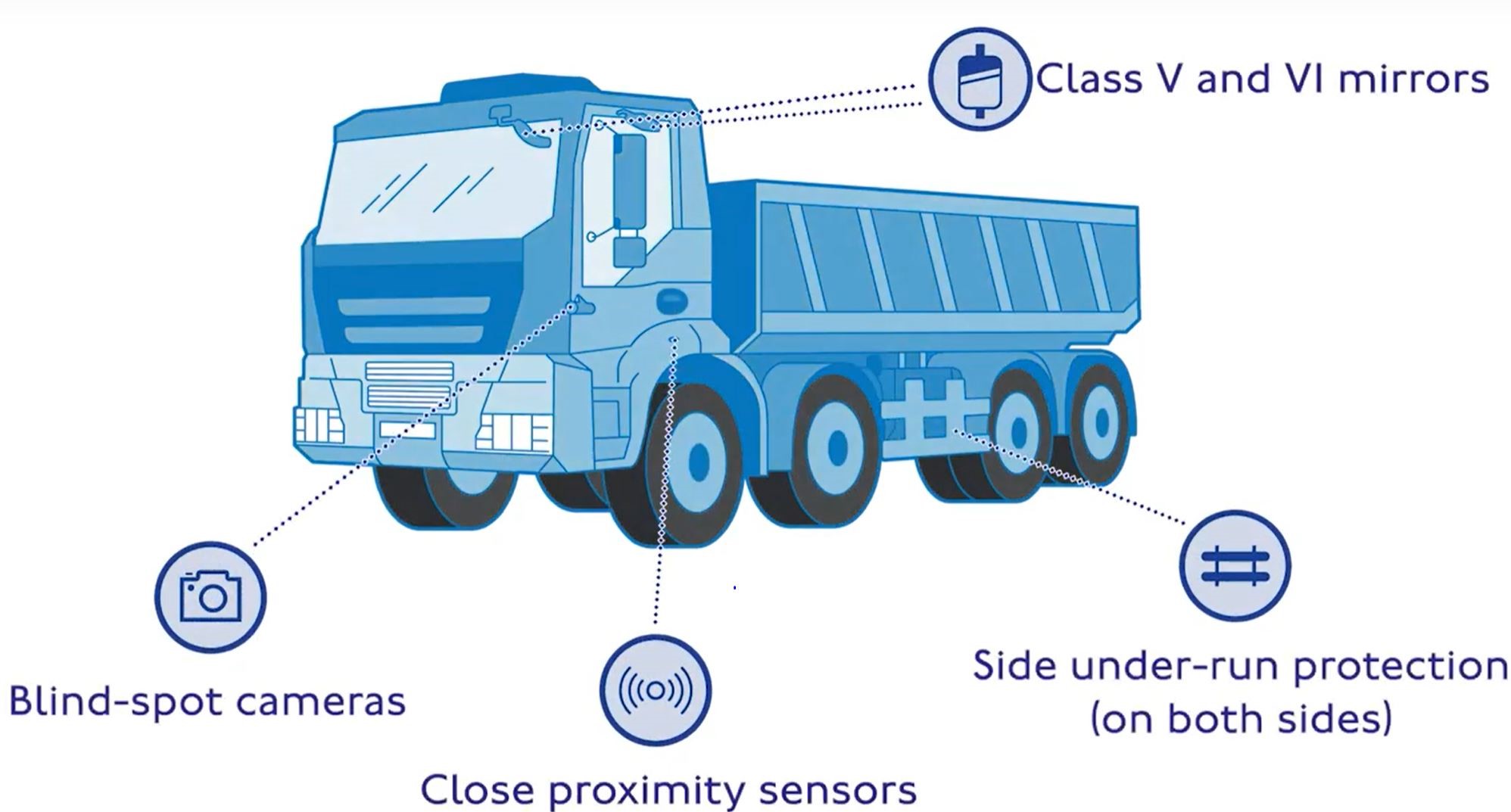
Source TFGL
How can Assured Systems Help?
Our DVS Kits are designed to enable your fleet vehicles to become compliant with the DVS standard.
The VT-DVS kit for tractor and trailer includes everything you need to meet the minimum DVS rating and FORS silver compliance. It includes the corner/side sensors, HD side camera, audio alerts, CAN-bus interface, timer cut out button, 1 channel 7” monitor and all cables and accessories. This kit also includes the visual warnings for the rear of the trailer.
https://www.assured-systems.com/fors-silver-compliant-vt-dvs-kit-for-tractor-and-trailer/
Assured Systems works with a number of installation partners nationally. We can arrange a convenient time for you to come and install and setup our kits. We ensure to minimise any downtime whilst making your fleet safe and compliant.
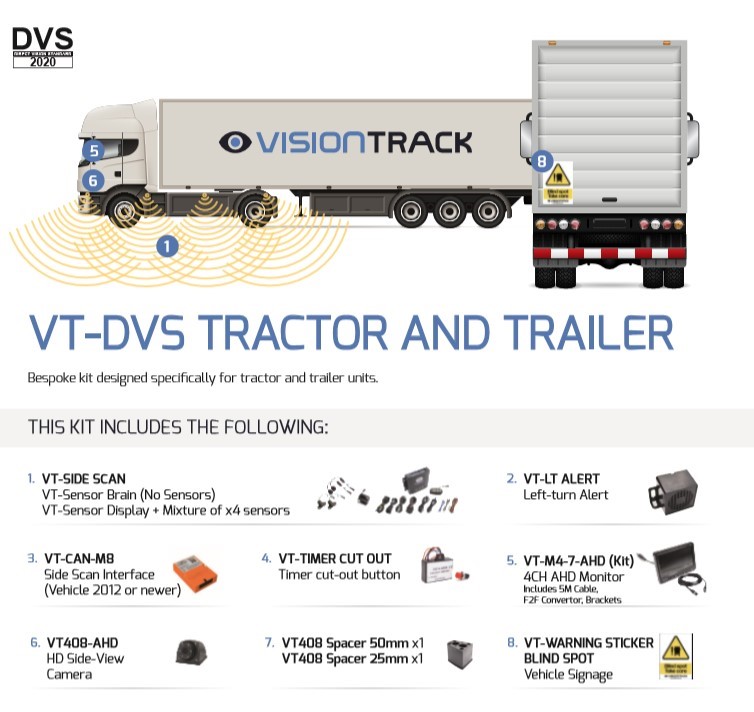
The kit includes:
- VT-Side Scan
- VT-LT Alert
- VT-CAN-M8
- VT-Timer Cut Out
- VT-M4-7-AHD (Kit)
- VT408-AHD
- VT408 Spacer 50mm x1, VT408 Spacer 25mm x1
- VT-Warning Sticker Blind Spot
Please contact us for a range of DVS/FORS kits.
What is FORS?
FORS or the ‘Fleet Operator Recognition Scheme’ is a voluntary accreditation scheme that promotes best practise for commercial vehicle operators. It has thousands of members and is fast becoming the go to scheme for the transport industry. FORS does not just promote vision and sensor systems. To become accredited, you will need to prove high standards across all aspects of safety, efficiency, security and environmental protection. The best way to do this is encouraging training of fleet operators to measure, monitor and improve safety and performance. The point here is that technology like cameras and blind sport minimisation kits certainly help but they are not the be all and end all to becoming accredited especially if you aspire to FORS gold.
It is open to operators of vans, lorries, mini-buses, coaches and other vehicles, and to the organisations that award contracts to those operators.
The point in FORS/CLOCS ‘Construction Logistics and Community Safety’ schemes are designed to provide the following benefits:
- Improve road safety through best practice and increased driver visibility
- Reduce fleet operating costs by promoting efficient operation and reduced insurance premiums. A 20% saving on insurance could be massive.
- Protection against false claims. Having in vehicle camera technology offers protection against false driving allegations.
- Increased Customer Retention. FORS accreditation showcases a commitment to good practice in all aspects of the business, including road safety and sustainability issues, making you the company of choice for the new clients.
FORS is aligned to a number of other schemes. At Bronze level operators will be ready to meet the requirements of the Safer Lorry Scheme. This mandates basic safety equipment (side under-run protection and safety mirrors) on all commercial vehicles over 3.5t. At Silver level operators will also meet the requirements of the Standard for Construction Logistics and Community Safety (CLOCS) and TfL’s own Work-Related Road Risk requirements (WRRR).
To apply for the FORS accreditation all of the steps and prices can be found on the FORS-online website.
The FORS Standard defines the requirements that operators must meet in order to attain and maintain FORS accreditation.
FORS Bronze
“Bronze accreditation confirms that you employ good practice and comply with the requirements laid out by the FORS Standard. This includes demonstrating dedication to driver and vehicle safety, combined with improving operating practices through effective monitoring of fuel and tyre usage.”
FORS Bronze does not require any specialist sensor, camera or audio warning devices. It does however require that the vehicle carries more than 16 blind spot warning stickers and signs.
“FORS members are required to fit HGVs and vehicles designed to carry more than 16 with blind spot warning signage. The warning signage should warn of the hazard and advise other road users to take appropriate action, for example ‘Blind spot – Take Care’.”
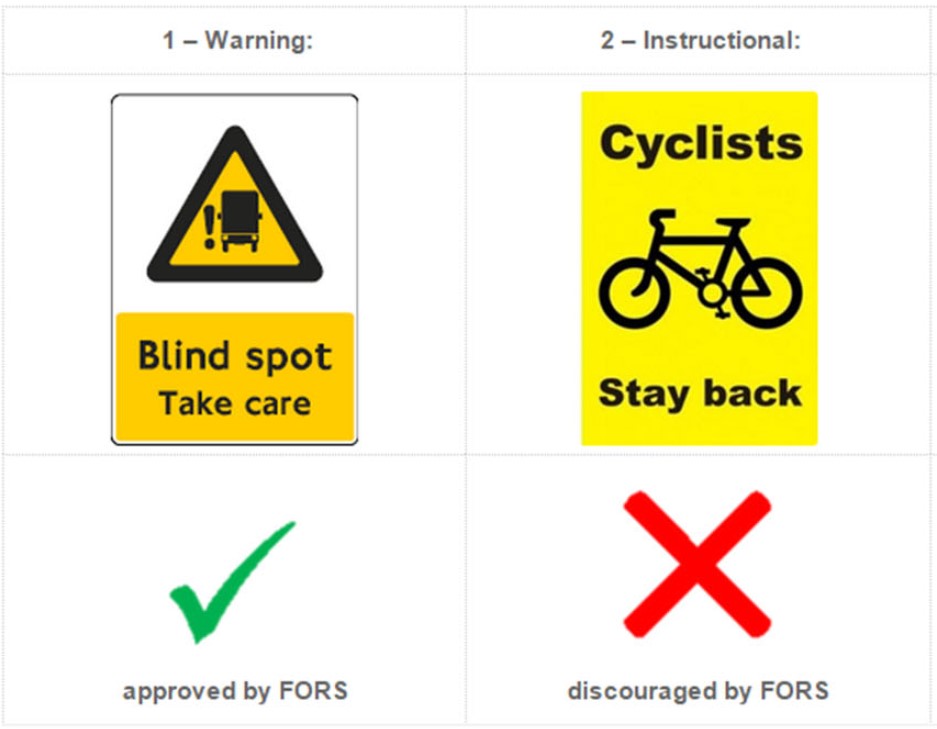
Any offensive signage will heavily affect the scoring.
FORS Silver
“Silver accreditation is awarded to operators who maintain their Bronze accreditation and are able to demonstrate that they have developed driver licencing verification systems, their vehicles over 3.5 tonnes are equipped with a left turn audible warning system and their vehicles are fitted with blind spot minimisation devices.
How to progress to Silver.
- For Silver accreditation, fleet operators shall provide evidence for all accredited operating centres demonstrating that they meet the specific requirements for Silver.
- Evidence must be submitted via the evidencing system.
- Bronze accreditation must be valid for at least 15 more days validity at the time of submitting evidence for Silver accreditation.”
Assured system have a wide range of FORS silver compliant safety kits that cover all of the required functionality.
The VT-Fors Silver includes everything you need to meet the DVS standard and FORS silver compliance. It includes the corner/side sensors, HD side camera, audio alerts, CAN-bus interface, timer cut out button, 1 channel 7” monitor and all cables and accessories. This kit also includes the visual warnings for the rear of the trailer, reverse audio warning and rear-view cameras for the tractor. If you are looking to include the trailer, we can provide additional rear view cameras and susu cable kits.
https://www.assured-systems.com/vt-fors-silver-artic-safety-kit/
We can customise any of our kits to suit your requirements or vehicle type. These include flat beds, panel vans and more. Please get in contact for further assistance.
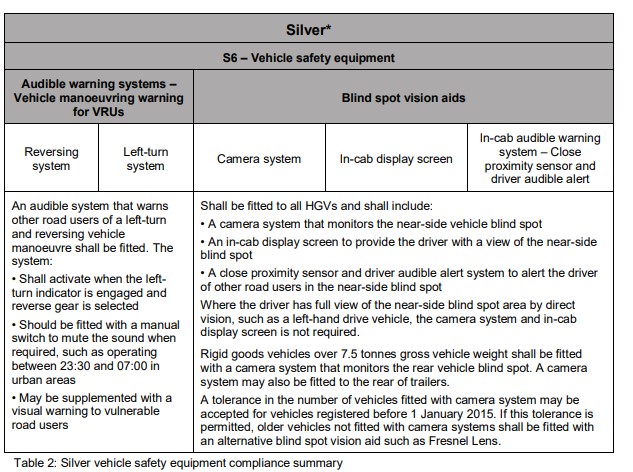
FORS GOLD
“FORS Gold requirements primarily involve best practice measures, including you promoting the FORS Standard through your supply chain and demonstrating meaningful improvements against the baseline data gathered in FORS Silver.”
Assured Systems has a range of GOLD kits.
https://www.assured-systems.com/vt-fors-gold-artic-trailer-safety-kit/
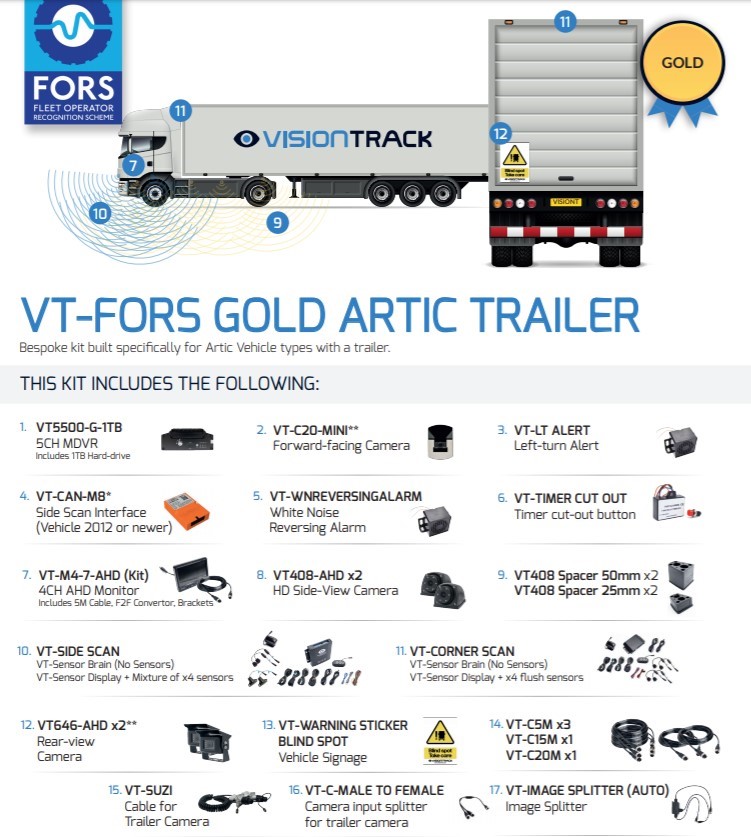
The VT-FORS Gold for Tractor and Artic vehicles provide an encompassing solution for your fleet. They enable FORS gold compliance through a mix of cameras, DVR’s, sensors and audio alerts. The kits include everything the VT-FORS Silver kits do with a number of additional features. FORS-Gold kits incorporate DVR units, front facing camera, left turn alarm, CAN interface, reverse alarm, timer cut out, 4 channel monitor, side view camera, spacers, side and corner scan sensors, rear view cameras, visual warnings and all cabling and accessories.
The system includes a 1TB DVR unit that captures footage from all round the vehicle. It provides and accurate witness in the event of an accident and will even allow in depth driver behaviour analytics, fleet performance and efficiency tracking. All of which assist in your aspirations for gold accreditation.
As an option you can opt into a fully connected service which includes a sim card connecting the DVR back to base to enable real time review and the sending of incident data just seconds after it has happened.
On top of that you can also subscribe (optional if you already have a software package) to ‘Autonomise’. This fantastic software captures, processes and stores high-def video footage enhanced with telematics data. The data received is analysed using complex algorithms to present meaningful management information which is displayed in a series of user-friendly dashboards, alerts and reports. Audible alerts can be sent to the devices notifying drivers that their actions are being recorded, which has a positive effect on their behaviour on the road.
Benefits include:
- Evidence against insurance claims
- Peace of mind for drivers and fleet managers
- Built in GPS, driver behaviour and telematics
- Prevent accidents and personal injury
- Manoeuvre safely
- Enhance blind spot vision
- Deterrent against Vandalism
The difference between FORS and DVS
| FORS Silver | DVS | |
| Side Proximity Sensors | – A close-proximity sensor and audible driver alert system to notify the driver of other road users in the near-side blind spot (Compulsary) | – A sensor system that alerts the driver to the presence of A vulnerable road user to be fitted to the nearside of the vehicle (Compulsary) |
| Front Proximity Sensors | – Additional front sensors with coverage as defined by the UNECE Regulation 46 Class VI mirror coverage zone (Optional) | |
| Left Side Camera | – A camera system that monitors the near-side vehicle blind spot (Compulsary) | – A fully operational camera monitoring system shall be fitted to the nearside of the vehicle (Compulsary) |
| Rear Camera | – Rigid good vehicles over 7.5 tonnes gross vehicle weight to be fitted with a camera system that monitors the rear vehicle blind spot (Compulsary) | |
| – A camera system may also be fitted to the rear of trailers (Optional) | ||
| Front Camera | – Camera systems should also monitor front blind spot (Recommended) | |
| Right Side Camera | – Camera systems should also monitor off-side blind spot (Recommended) | |
| Mobile Recording | – Camera systems should also be able to digitally record incidents and assist in driver training and development (Recommended) | |
| Left-Turn external audible warning | – Audible vehicle manoeuvring warning to warn vulerable road users when a vehicle is turning left. (Compulsary) | – Audible vehicle manoeuvring warning to warn vulnerable road users when a vehicle is turning left (Compulsary) |
| – Should be fitted with a manual switch to mute the sound when required, such as operating between 23:30 and 7:00 in urban areas. (Recommended) | – The device should have a manual on/off switch for use between the hours of 23:30 and 7:00 (Recommended) | |
| – May be supplemented with a visual warning to vulnerable road users (Optional) | – Should consider a system that combines spoken warnings and white noise. (Recommended) | |
| Reversing Alarm | – Rear warning alarm activated when reverse gear is engaged (Compulsary) | |
| – Should be fitted with a manual switch to mute the sound when required, such as operating between 23:30 and 7:00 in urban areas. (Recommended) | ||
If you would like to learn more about DVS/FORS and our range of kits please get in contact.










